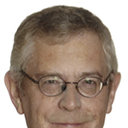Body composition in acromegaly: the effect of treatment.
Schlüsselwörter
Abstrakt
Total body water (TBW) and total potassium (TBK) were measured in patients participating in a follow-up investigation of all acromegalic patients seen between 1956 and 1984. The results were compared with population-based estimates of TBK and TBW calculated from height (BH), weight (BW) age and sex, using data from a large number of healthy subjects (n = 476). The findings were compared with values obtained at diagnosis and were also related to growth hormone (GH) and IGF-I/SmC concentrations at follow-up. BW at follow-up was unchanged compared to BW at diagnosis and was 9.7 and 10.0 kg higher in males and females, respectively, than in healthy subjects of the same BH (BWnorm). Growth hormone concentration at follow-up correlated directly with excess extracellular fluid volume (ECW%) (P less than 0.001) and inversely with the ratio observed/predicted body fat (BF%) (P less than 0.001) as well as with BW/BWnorm (P less than 0.05). On the other hand, GH concentration did not correlate with excess body cell mass (BCM%) estimated from TBK. IGF-I/SmC concentration correlated with GH concentration at follow-up (P less than 0.001) and with ECW% (P less than 0.01) but not with BCM% or BF%. In 39 patients, data on body composition were also available at diagnosis. Of these, three males had developed gonadal insufficiency and their BCM had decreased markedly. One patient had suffered from hemiplegia. Five patients had not received any treatment. In the remaining 30 treated patients, those with a post-treatment GH concentration below 5 mU/l were normalized with respect to ECW and BF. BCM, however, was unchanged. In contrast, patients with GH concentration greater than or equal to mU/l displayed unchanged body composition. Furthermore, BH decreased significantly in successfully treated patients.


